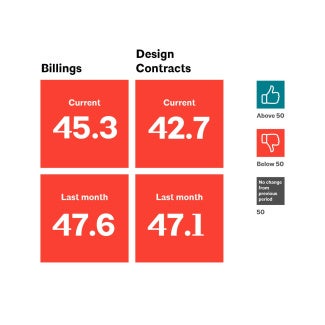Firm impact of non-compete & non-solicitation agreements
Author: AIA Risk Management Program
November 29, 2018 | Updated: December 18, 2018
Explore examples of how non-compete and non-solicitation agreements can impact your firm, in particular how these agreements can be useful tools to minimize the loss of your firm’s valuable assets.

Non-compete & non-solicitation agreements
Non-compete and non-solicitation agreements are written agreements between a key employee and the firm in which an employee agrees to not solicit a firm’s clients or take certain information to a competitor for a specified period of time after his or her employment terminates. There are a number of examples where a non-compete or non-solicitation agreement can impact a firm. For example, non-compete and non-solicitation agreements are useful tools routinely used by firms to minimize the loss of their valuable assets, both tangible and intangible. Consider the following:
An architect, nearing retirement age, was grooming two employees to take over his firm and—in return—was looking for some level of compensation for the value of the firm that they were assuming. Several months before his retirement, the two individuals left the firm, taking several employees and clients with them. Unfortunately for the retiring architect, he had not considered non-compete and non-solicitation provisions as part of the younger architects’ employment with the firm. The retiring architect is not yet retired; he is still working at his firm, dealing with the loss of key clients and employees and working to rebuild the firm while he determines how to best pass on the legacy of the firm. Had he entered into a non-compete agreement with his key employees, he would have had some recourse and might have discouraged them from leaving.
Architectural firms have not only intrinsic value in their client relationships and project portfolios but actual financial value in the project backlog, marketing plans, and business practices, including their “trade secrets.” Firms have an interest in keeping each of those valuable assets from being transitioned to the competition, particularly when they will not receive anything in return. The most common way that these assets can be lost is by departing employees using this information in a new firm or in starting their own firm.
Non-compete agreements are not usually appropriate for all employees but are commonly used when an employee has significant client contacts or a strong business development presence. Below are some points to consider in drafting a non-compete:
- Necessary consideration: In some states, continued employment is not considered adequate consideration, where such consideration is an offer of value in exchange for an executed non-compete agreement. In these jurisdictions, a sign-on bonus or some other form of additional compensation is needed to create a binding contract.
- Duration: The duration of the restrictive period should be reasonably balanced. A period of six months to a year may be considered “typical,” and a period of greater than two years can be seen as unreasonable and unenforceable.
- Geography: The restriction should be reasonably tailored geographically in light of the firm’s practice area and/or marketing practices. If the geographic restriction is unnecessarily expansive, the agreement runs the risk of being deemed unreasonable and therefore unenforceable.
In addition, particular clients, marketing sources, and projects can be specifically included in the non-compete/non-solicitation agreement. Liquidated damages can be agreed to in advance in the event of a violation. And be aware of applicable laws, as state laws that govern non-competes vary from state to state. Some states, for example, are very restrictive and have held that non-competes are only enforceable against equity employees (i.e., owners).
In the examples above, firms seek to protect their assets. Other circumstances arise where non-compete terms are imposed upon a firm and restrictions are reversed. Consider a newly hired employee who had entered into a non-compete with a former employer. The new employee may be restricted in pursuit of clients of their former firm, market sectors, or geographic reach. This is particularly likely if the individual is hired at a leadership level, where significant marketing or project responsibilities are expected. When hiring a new employee, always ask if they are bound by a non-compete from their prior employer. Review it carefully to see what impact that agreement might have on their actions within, and actions you take for, your firm.
In drafting a non-compete for your firm or reviewing a non-compete that your new employee has signed, an important point to consider is fairness. An agreement that is too broad or restrictive might be unenforceable. Any non-compete, either drafted for or imposed upon your firm, should be reviewed by your attorney to ensure that the agreement is fair and enforceable under the laws of your state.
Howard Stevens of Pascal Stevens, LLC contributed to this article.
AIA has provided this article for general informational purposes only. The information provided is not legal opinion or legal advice.



